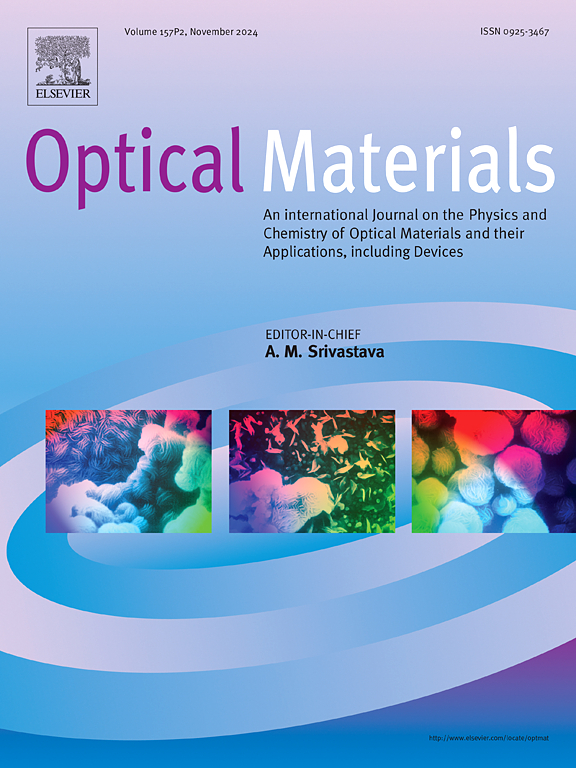Enhancing the performance of air-processed organic solar cells by formation of a ternary blend with an organic dye
IF 3.8
3区 材料科学
Q2 MATERIALS SCIENCE, MULTIDISCIPLINARY
引用次数: 0
Abstract
Organic solar cells (OSCs) have garnered attention for their processing simplicity, cost-effectiveness, and flexibility. This manuscript explores the incorporation of the organic dye Rhodamine B (RhB) into a binary blend of PTB7-Th:PC70BM, forming air-processed ternary blend OSCs with an inverted architecture. The choice of PTB7-Th:PC70BM is driven by its record efficiency exceeding 10 % and compatibility with RhB in terms of photon absorption range and energy level alignment. With an optimal RhB weight content of 0.2 %, the ternary OSCs exhibit a 27 % enhancement in power conversion efficiency (PCE) compared to binary devices. This enhancement is mainly caused by a 13 % increase in short-circuit current density (JSC) and an 11 % increase in fill factor (FF). Steady-state photoluminescence, transient absorption and incident photon-to-current conversion efficiency (IPCE) measurements revealed the role of Förster Resonance Energy Transfer (FRET) from RhB to PTB7-Th in contributing to the higher photocurrent in the ternary devices. The improved FF and the enhancement in IPCE at wavelengths where RhB does not absorb suggest enhanced charge generation and transport due to more optimal blend morphology from better chain ordering, as inferred from grazing incidence X-ray diffraction (GIXRD). Furthermore, the ternary blend displays enhanced photochemical stability and improved device stability under 1 sun illumination in the presence of oxygen. These findings underscore the potential of incorporating organic dyes in OSCs to achieve improved performance and enhanced stability, addressing a critical challenge to the commercial viability of these promising photovoltaic devices.
求助全文
约1分钟内获得全文
求助全文
来源期刊

Optical Materials
工程技术-材料科学:综合
CiteScore
6.60
自引率
12.80%
发文量
1265
审稿时长
38 days
期刊介绍:
Optical Materials has an open access mirror journal Optical Materials: X, sharing the same aims and scope, editorial team, submission system and rigorous peer review.
The purpose of Optical Materials is to provide a means of communication and technology transfer between researchers who are interested in materials for potential device applications. The journal publishes original papers and review articles on the design, synthesis, characterisation and applications of optical materials.
OPTICAL MATERIALS focuses on:
• Optical Properties of Material Systems;
• The Materials Aspects of Optical Phenomena;
• The Materials Aspects of Devices and Applications.
Authors can submit separate research elements describing their data to Data in Brief and methods to Methods X.
 求助内容:
求助内容: 应助结果提醒方式:
应助结果提醒方式:


